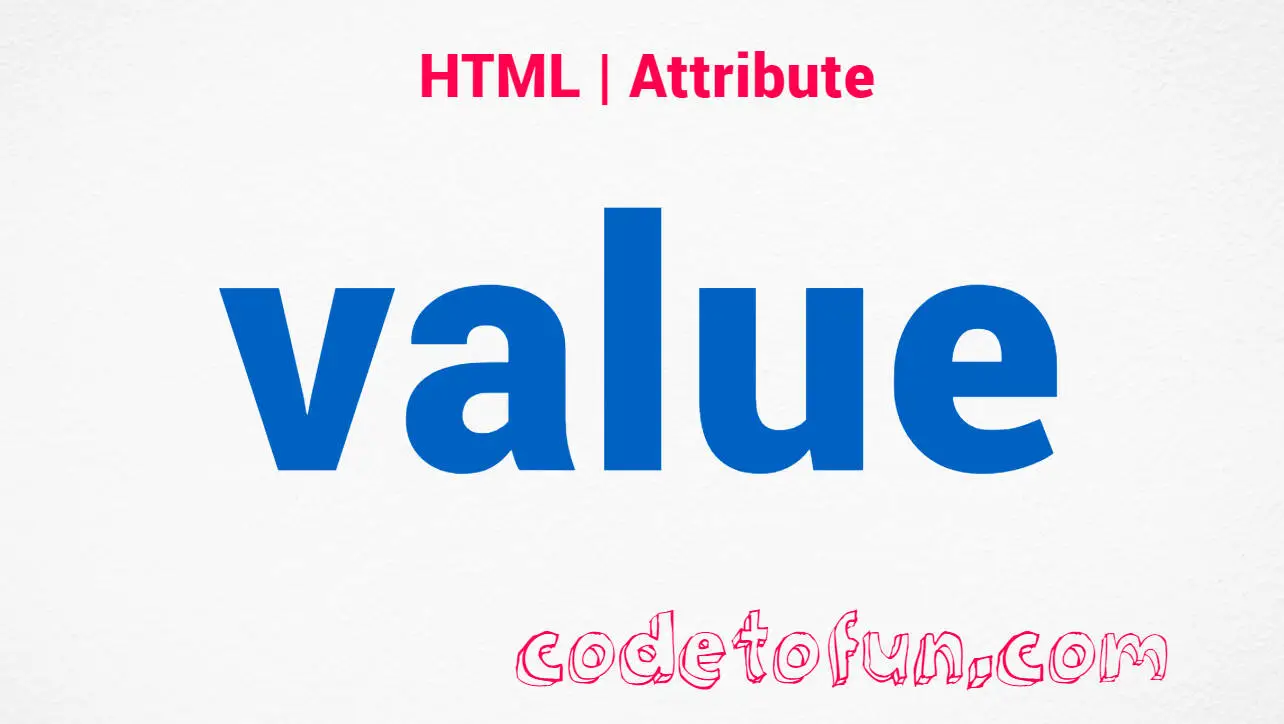
HTML Basic
HTML Reference
- HTML Tags
- HTML Deprecated Tags
- HTML Events
- HTML Attributes
- accept
- accept-charset
- accesskey
- action
- align
- alt
- as
- async
- autocomplete
- autofocus
- autoplay
- bgcolor
- border
- charset
- checked
- cite
- class
- color
- cols
- colspan
- content
- contenteditable
- controls
- coords
- data
- data-*
- datetime
- default
- defer
- dir
- dirname
- disabled
- download
- draggable
- enctype
- enterkeyhint
- for
- form
- formaction
- headers
- height
- hidden
- high
- href
- hreflang
- http-equiv
- id
- inert
- inputmode
- ismap
- kind
- label
- lang
- list
- loop
- low
- max
- maxlength
- media
- method
- min
- multiple
- muted
- name
- novalidate
- onabort
- onafterprint
- onbeforeprint
- onbeforeunload
- onblur
- oncanplay
- oncanplaythrough
- onchange
- onclick
- oncontextmenu
- oncopy
- oncuechange
- oncut
- ondblclick
- ondrag
- ondragend
- ondragenter
- ondragleave
- ondragover
- ondragstart
- ondrop
- ondurationchange
- onemptied
- onended
- onerror
- onfocus
- onhashchange
- oninput
- oninvalid
- onkeydown
- onkeypress
- onkeyup
- onload
- onloadeddata
- onloadedmetadata
- onloadstart
- onmousedown
- onmousemove
- onmouseout
- onmouseover
- onmouseup
- onmousewheel
- onoffline
- ononline
- onpagehide
- onpageshow
- onpaste
- onpause
- onplay
- onplaying
- onpopstate
- onprogress
- onratechange
- onreset
- onresize
- onscroll
- onsearch
- onseeked
- onseeking
- onselect
- onstalled
- onstorage
- onsubmit
- onsuspend
- ontimeupdate
- ontoggle
- onunload
- onvolumechange
- onwaiting
- onwheel
- open
- optimum
- pattern
- placeholder
- popover
- popovertarget
- popovertargetaction
- poster
- preload
- readonly
- rel
- required
- reversed
- rows
- rowspan
- sandbox
- scope
- selected
- shape
- size
- sizes
- span
- spellcheck
- src
- srcdoc
- srclang
- srcset
- start
- step
- style
- tabindex
- target
- title
- translate
- type
- usemap
- value
- width
- wrap
- HTML Global Attributes
- HTML Status Code
- HTML Language Code
- HTML Country Code
- HTML Charset
- MIME Types
HTML value Attribute

Photo Credit to CodeToFun
🙋 Introduction
The value attribute in HTML is a fundamental feature that allows developers to set an initial value for form elements.
This attribute is applied to various input elements, such as text fields, radio buttons, checkboxes, and more.
Understanding how to use the value attribute is crucial for pre-populating form fields and controlling user input.
🎯 Purpose of value
The primary purpose of the value attribute is to specify the initial value for a form element. When a user interacts with the form, this initial value serves as a default, and users can choose to keep it, modify it, or leave it blank, depending on the type of input field.
💎 Values
The value attribute can be assigned different values based on the type of form element. For example:
- For text input fields: The value can be a pre-filled text string.
- For radio buttons and checkboxes: The value represents the data associated with the option.
📄 Example
Let's look at a simple example of how to use the value attribute in an HTML form:
<form>
<label for="username">Username:</label>
<input type="text" id="username" name="username" value="JohnDoe">
<label for="email">Email:</label>
<input type="email" id="email" name="email" value="john.doe@example.com">
<label for="subscribe">Subscribe to newsletter:</label>
<input type="checkbox" id="subscribe" name="subscribe" value="yes" checked>
<input type="submit" value="Submit">
</form>🧠 How it Works
In this example:
- The text input for the username has an initial value of JohnDoe.
- The email input has a pre-filled value of john.doe@example.com.
- The checkbox for newsletter subscription is initially checked with a value of yes.
🔄 Dynamic Values with JavaScript
You can dynamically set or modify the value attribute using JavaScript. This is particularly useful when you want to update form values based on user actions or other dynamic factors. Here's a brief example:
<script>
// Dynamically set value for an input field
document.getElementById("dynamicField").value = "DynamicValue";
</script>🧠 How it Works
In this script, the value attribute is dynamically set to DynamicValue for an input field with the id "dynamicField." This can be beneficial when you need to update form values based on real-time data or user interactions.
🏆 Best Practices
- Use the
valueattribute to provide default or pre-filled values for form elements. - When dynamically setting values with JavaScript, ensure that it aligns with the overall user experience and form functionality.
- Be mindful of accessibility considerations when using pre-filled values, especially for users with screen readers or other assistive technologies.
🎉 Conclusion
The value attribute is a crucial aspect of HTML forms, allowing developers to set default values and enhance the user experience. By understanding how to effectively use the value attribute, you can create more user-friendly and efficient web forms.
👨💻 Join our Community:
Author

For over eight years, I worked as a full-stack web developer. Now, I have chosen my profession as a full-time blogger at codetofun.com.
Buy me a coffee to make codetofun.com free for everyone.
Buy me a Coffee












If you have any doubts regarding this article (HTML value Attribute), please comment here. I will help you immediately.